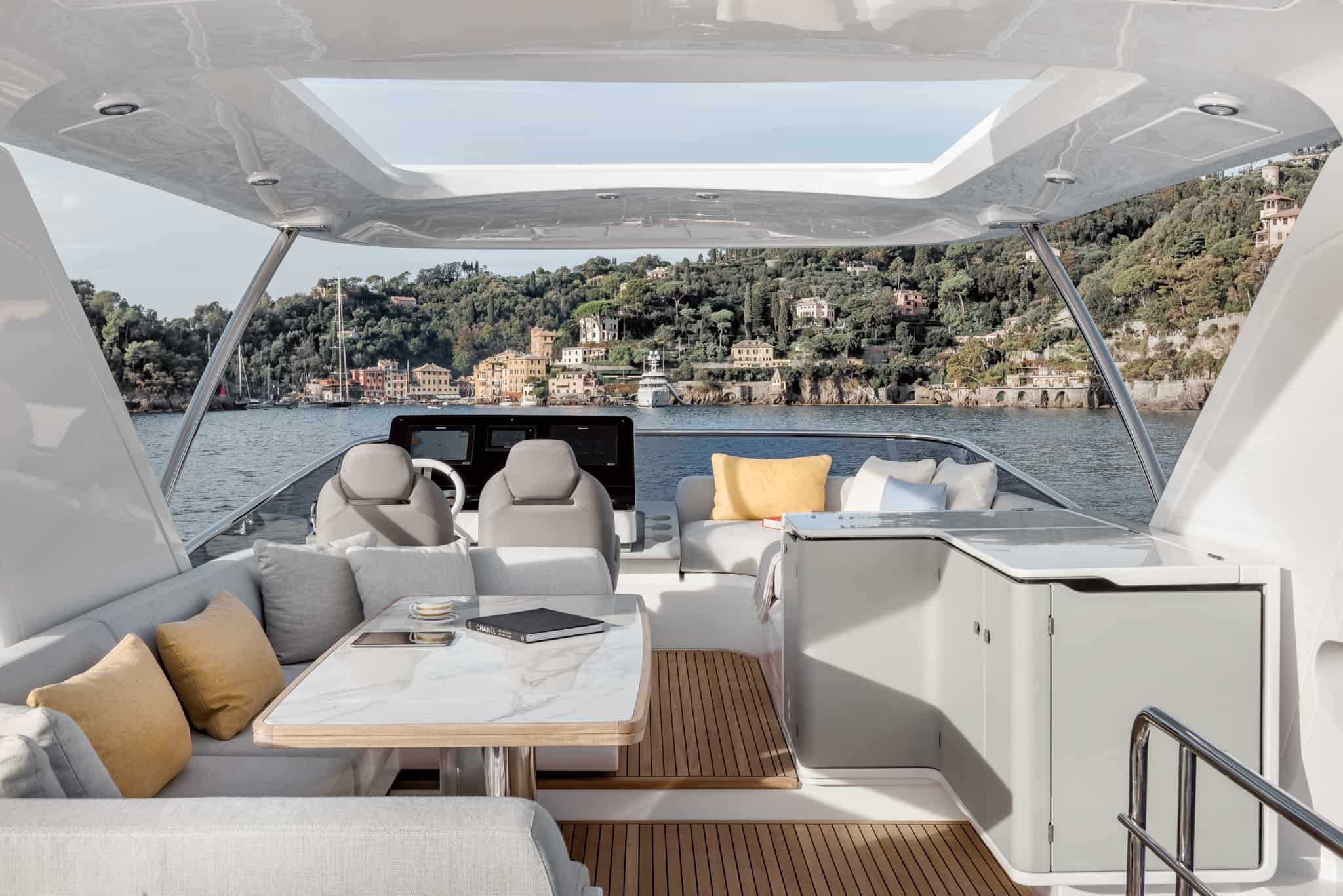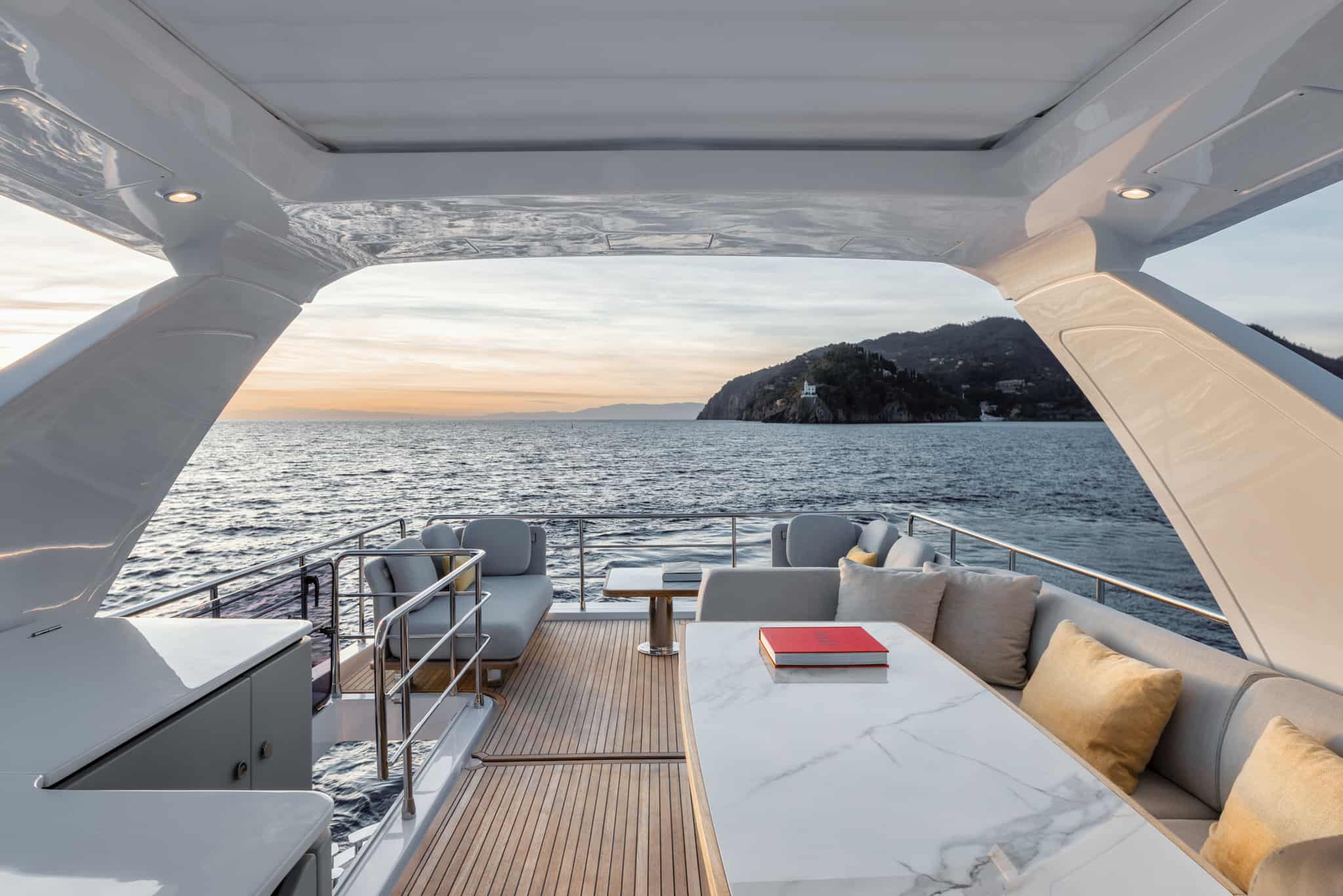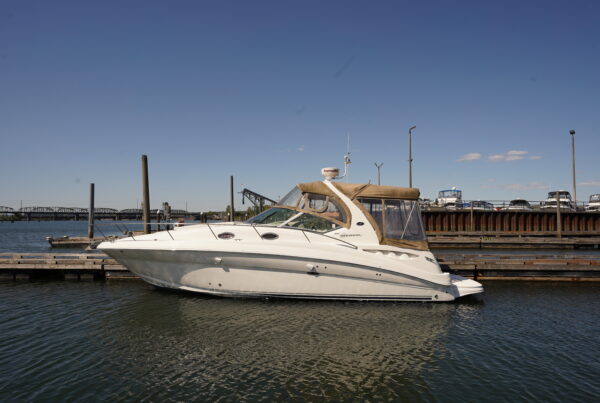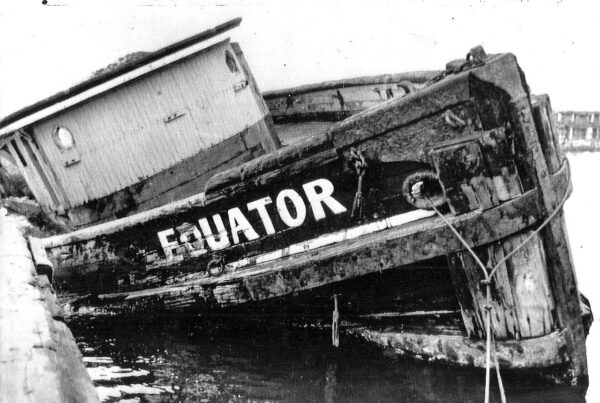Introduction:
Boating enthusiasts seeking an elevated experience on the water often turn to flybridges, a distinctive feature found on many modern boats. This article aims to shed light on flybridges, highlighting their benefits, potential pitfalls, and use cases, while providing a concise guide to help boaters make an informed decision when considering a boat with a flybridge.
What is a Flybridge?
A flybridge is an upper deck located above the main helm station on a boat. It offers an enhanced vantage point, providing commanding views of the surroundings and creating a spacious additional area for relaxation and entertainment. Typically accessed via a staircase or ladder, the flybridge offers a unique perspective, allowing boaters to soak in panoramic views while enjoying the open air.

Benefits of a Flybridge:
- Superior Visibility: The elevated position of a flybridge provides excellent visibility, enabling captains to navigate with confidence and monitor their surroundings effectively.
- Enhanced Social Space: The additional deck space on the flybridge allows for increased seating capacity, making it an ideal spot for hosting guests and socializing during a cruise.
- Privacy and Escape: When anchored or moored, the flybridge can serve as a private retreat away from the main deck, providing tranquility and seclusion.
Considerations and Warnings:
- Height Restrictions: Boaters should be mindful of height limitations such as low bridges or overhanging structures that may restrict access to certain waterways or marinas.
- Weather Exposure: While the open-air nature of the flybridge offers a refreshing experience, it also exposes occupants to the elements, requiring suitable protection from sun, wind, and rain.
Use Cases for Most Boaters: Flybridges are particularly well-suited for the following scenarios:
- Cruising and Sightseeing: Flybridges offer an unparalleled vantage point for enjoying scenic coastal cruises, allowing passengers to take in breathtaking views.
- Entertaining Guests: The spaciousness and social nature of the flybridge make it a desirable location for hosting gatherings and enjoying quality time with friends and family.
- Sportfishing: The elevated position enhances visibility for spotting fish, making flybridges popular among sportfishing enthusiasts.

Instances you should not consider a flybridge:
- Performance Boaters: For boaters who prioritize speed and maneuverability, a flybridge may not be the best option. The additional weight and height can affect the boat’s center of gravity, potentially impacting its performance.
- Trailerable Boats: If you frequently transport your boat on a trailer or have limited storage space, a flybridge may pose challenges due to its added height. Trailering and finding suitable storage accommodations might be more cumbersome with a flybridge-equipped boat.
- Solo Boaters or Small Crews: Operating a flybridge requires going up and down stairs or a ladder, which may not be ideal for solo boaters or those with a small crew. Maneuvering between the main deck and flybridge can be more time-consuming and potentially pose safety concerns when handling the boat alone.
- Budget Constraints: Flybridge-equipped boats often come with a higher price tag compared to boats without this feature. If budget constraints are a primary concern, opting for a boat without a flybridge may be a more cost-effective choice.
- Low Bridge Areas: Boaters planning to navigate through waterways with low bridges or other height restrictions should carefully consider whether a flybridge is suitable. The added height of the flybridge may limit access to certain areas, potentially restricting your boating options.
A Short Guide for Considering a Boat with a Flybridge:
- Determine Your Boating Style: If you enjoy socializing, sightseeing, or fishing, a flybridge may greatly enhance your boating experience.
- Assess Navigational Needs: Consider the waterways you plan to navigate and ensure that height restrictions will not limit your access.
- Evaluate Budget and Space Requirements: Flybridge-equipped boats often come at a premium, so carefully assess your budget and the space available for mooring or storage.

In conclusion, flybridges offer a unique and rewarding experience for boat owners and enthusiasts alike. With their superior visibility, expanded social space, and versatility, they elevate the boating experience to new heights. By understanding the benefits, considerations, and appropriate use cases, boaters can confidently decide whether a boat with a flybridge aligns with their needs and preferences.
We encourage you to use Rabbet to connect with the rest of the boating community! Hop onto our Learn tab to find more articles like this. Join our various forums to discuss with boating enthusiasts like you. Create an account to get started.
Visit us on Pinterest to collect content and inspire others.



